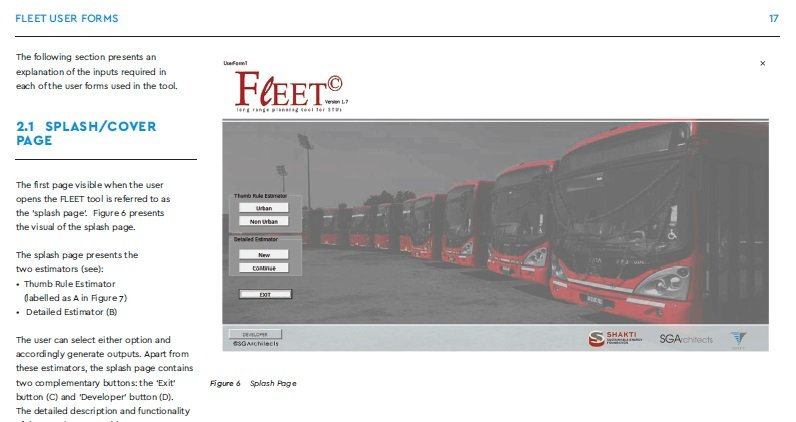SHAKTI
Building a Long-Range Planning Toolkit for State Transport Undertakings (STUs) in India
SGA has developed a 'long range planning toolkit for public bus companies' known as FLEET. FLEET is a spreadsheet-based toolkit with a VBA based user friendly interface, that has been developed in collaboration with TRIPP, IIT Delhi, under funding from Shakti Sustainable Energy Foundation, to allow generation of long-range operation and business plan (for bus operators) including annual budgetary, fleet procurement, staff induction and infrastructure development requirements.
The objective of this tool is to develop and influence adoption of a long-range planning approach (by public bus companies in India). Such an approach should allow establishment of context specific long-term requirements, vision and goals for bus companies. When used strategically, this tool can contribute to improved efficiency and profitability of bus companies. It provide an action plan with annual goals to achieve long term i.e., up to 33-year targets. The tool includes region specific data for 56 public bus companies in India. It can however be used in any region by inputting the required data (including current number of trips, population, etc.). The FLEET tool is supported with a user guide or manual. The User manual explains step by step data inputs for each user form in the tool. It explains the functionality of the tool, data requirement, range of data that can be input and types of outputs that can be derived.
The tool includes two estimators. A thumb rule or population-based estimator for use by advocacy groups and policy makers while the detailed, current operational, fleet and financial data-based estimator is developed for use by STU’s or public bus companies. The tool uses current data, along with envisioned or horizon year requirements (in terms of mode share, expected occupancy, fleet utilization, vehicle utilization, cost per km, earning per km, etc.) to generate 36 annual outputs, ranging from annual estimated operational parameters, annual budgetary requirements, annual fleet procurement requirements, annual infrastructure (bus depot and terminal) development requirements, etc.












